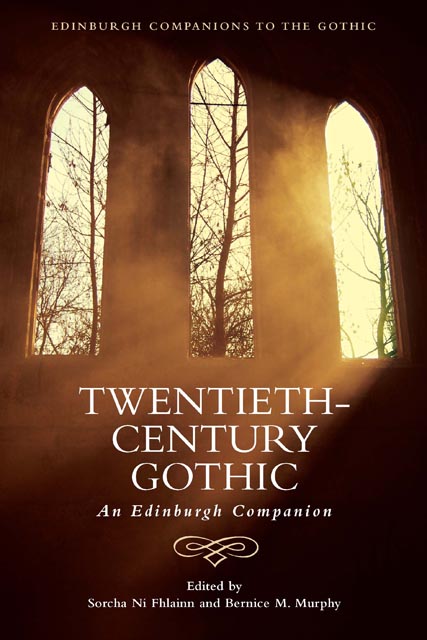10 - Twentieth-Century War Gothic
Published online by Cambridge University Press: 18 November 2022
Summary
It is commonly accepted that war has had a significant influence on modern art and culture – for example, the role of the First World War in the development of Anglo-American modernism – but the relationship between modern war and the Gothic is even more closely intertwined. From the earliest Gothic texts to the most recent horror films, war has been a tacit or explicit subject of dread, graphic description or psychological investigation. As the twentieth century experienced two global wars and many regional ones – touching countless people across the planet and taking millions of lives in often horrific and utterly dehumanising ways never previously imagined – the Gothic mode played an exceptionally important role in the representation and impact of these traumatic and dislocating experiences in both literature and film. In this chapter I will be focusing mainly on British and American culture produced in English but will occasionally mention how War Gothic has appeared in other national contexts, since the reach of the Gothic as a language and toolbox for portraying the violence, horror and haunting after-effects of war has followed the international reach of both the novel and the horror film. After a brief look at the origins of War Gothic in the eighteenth century, I will trace its development in the twentieth century with a special focus on the Gothic war poetry of the First World War and the long afterlife of WWI and WWII trauma culture in the last decade of the century.
Origins and Overview
War Gothic includes a family of devices that run from gallows humour and graphic body horror to more subtle Gothic metaphors of ghostliness and haunting as a means of depicting the mental injuries produced by war. The original English Gothic has traditionally been linked to the Age of Revolutions (especially the French Revolution), but its roots are even more firmly planted in the first real world war, known in Britain as the Seven Years’ War (1756–63) and in the United States as the French and Indian War (1754–63). This conflict, fought by a large number of belligerents including France, Britain, Spain, Prussia, Russia, Austria, Sweden, India and the Iroquois Confederacy, left somewhere between 900,000 and 1,400,000 people dead across the globe, including large numbers of civilians.
- Type
- Chapter
- Information
- Twentieth-Century GothicAn Edinburgh Companion, pp. 165 - 179Publisher: Edinburgh University PressPrint publication year: 2022



